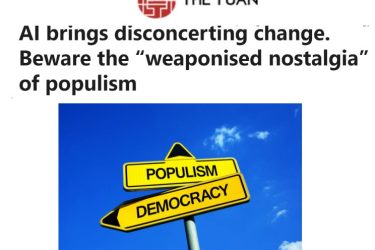Applying AI to drug development
Drug development is a time-consuming and expensive business. Notoriously, it takes over 10 years and costs around $2 billion to bring one drug to market — and around 90% of candidate drugs fail during human trials. And the situation is getting worse. Eroom’s Law (Moore’s Law in reverse) is the observation that the cost of developing a new drug doubles roughly every nine years.
The most promising solution to this problem is applying artificial intelligence to the process. A number of companies are pursuing this, and one of the leaders is Insilico Medicine, which announced today that it is putting R2D2 to work in its lab.
The three stages of drug development
The drug development process can be broken down into three stages. You start by identifying a protein which may be causing a disease. Then you identify a molecule – the drug – which will stop the protein doing the damage. Finally, you undertake trials – first pre-clinical trials, and then trials in humans.
Insilico has already made substantial progress in applying AI to the first two stages. A platform called PandaOmics identifies the wayward protein. It does this partly using data gleaned from over 40 million documents, including patents, grants, medical journals, clinical trial reports and so on. It also conducts laboratory experiments, and inputs two trillion data points drawn from over 10 million samples (microarrays, RNA sequencing, proteomes). There are huge savings to be made if this part of the process can be automated.
An army of R2D2s
This is where R2D2 comes in. A little army of autonomous guided vehicles (AGVs) will cultivate cell cultures, and carry out screening, sequencing, imaging, and analysis. Insilico founder and CEO Alex Zhavoronkov says that “these R2D2s are faster and more precise than humans”, and they will create “a system that feeds itself with data.”
There are some unexpected benefits from collating medical data on the scale that Insilico does it. Zhavoronkov says the company “follows the money.” A decade ago, Insilico’s scientists began manually curating government grant data and feeding it into their system. Now, they can trace the $2 trillion of government grants which are spent on clinical trials. Not only can PandaOmics find new targets, but it can also predict which targets are likely to be “hot” five years out.
The second stage of the drug discovery process – the design of a molecule which will prevent the disease – is handled by a platform called Chemistry42. 70% of Insilico’s pipeline is in cancer treatments, but it also has therapeutic programs in COVID-19, inflammation, and fibrosis. Its candidate drug to treat idiopathic pulmonary fibrosis was the first to be both discovered and designed using AI, and is currently in Phase 1 trials.
In the not-too-distant future, the company hopes to launch AI-based clinical trial prediction tool, which will mean it offers a seamless, end-to-end drug discovery platform. Partly to help with this, Insilico is today announcing a $60 million Series D funding round from a global group of investors that includes BHR Partners, Warburg Pincus and B Capital Group.
Licensing
As well as develop drugs in-house, Insilico licenses its AI platform to other pharma companies, to enable them to accelerate their programs. It has partnerships with Fosun Pharma, and with Cambridge-based EQRx, a company that raised $1.8 billion last August on the promise of lowering drug costs. The partnership with Fosun has already borne fruit in the form of a pre-clinical candidate for cancer which was identified less than 40 days after the partnership began.
“The application of artificial intelligence and machine learning for drug discovery has incredible potential to transform the way new therapies are developed,” says Min Fang, managing director and head of China Healthcare at Warburg Pincus, one of the Series D investors. “For Insilico, 2022 was a year of incredible growth and progress. They have demonstrated the value of combining deep scientific expertise with cutting-edge technology capabilities to significantly accelerate drug discovery.”



